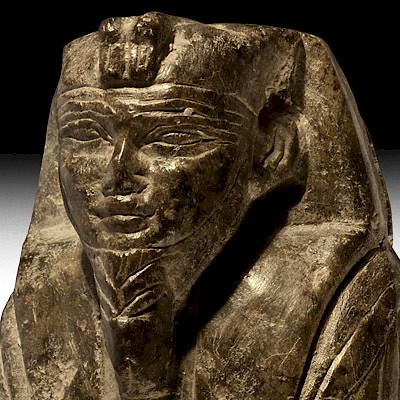Veneto-Cretan Mother of God Icon
Lot 624
About Seller
TimeLine Auctions Limited
The Court House, 363 Main Road
Harwick, Essex CO12 4DN
United Kingdom
Estimate:
GBP£9,000 - GBP£12,000
$12,162.16 - $16,216.22
Absentee vs Live bid
Two ways to bid:
- Leave a max absentee bid and the platform will bid on your behalf up to your maximum bid during the live auction.
- Bid live during the auction and your bids will be submitted real-time to the auctioneer.
Bid Increments
| Price | Bid Increment |
|---|---|
| GBP£0 | GBP£5 |
| GBP£100 | GBP£10 |
| GBP£200 | GBP£20 |
| GBP£500 | GBP£50 |
| GBP£1,000 | GBP£100 |
| GBP£2,000 | GBP£200 |
| GBP£5,000 | GBP£500 |
| GBP£10,000 | GBP£1,000 |
| GBP£20,000 | GBP£2,000 |
| GBP£50,000 | GBP£5,000 |
| GBP£100,000 | GBP£10,000 |
| GBP£250,000 | GBP£20,000 |
About Auction
By TimeLine Auctions Limited
Feb 26, 2019
Set Reminder
2019-02-26 05:00:00
2019-02-26 05:00:00
America/New_York
Bidsquare
Bidsquare : TimeLine Auctions - Antiquities Sale - Day 1
https://www.bidsquare.com/auctions/timeline-auctions-limited/timeline-auctions---antiquities-sale---day-1-3821
Auction Venue: The May Fair Hotel London Stratton Street Mayfair London, W1J 8LT Viewing from noon Monday 25th February 2019 Champagne Reception: 6pm - 9pm Tuesday 26th February 2019 (Day 1) 10am : Lots 1 - 660 TimeLine Auctions Limited enquiries@timelineauctions.com
Auction Venue: The May Fair Hotel London Stratton Street Mayfair London, W1J 8LT Viewing from noon Monday 25th February 2019 Champagne Reception: 6pm - 9pm Tuesday 26th February 2019 (Day 1) 10am : Lots 1 - 660 TimeLine Auctions Limited enquiries@timelineauctions.com
- Lot Description
16th century AD. A large icon executed in tempera(?) and gold leaf on a slightly curved wood panel base depicting Mary Theotokos and the infant Jesus on a plain gold field; Mary with head slightly bowed left wearing a red maphorion mantle over a dark blue robe, with elaborate golden saltires on the shoulder and brow, fine gold brocade to the hem, floriate disc-brooch fastening to the chest; the infant Saviour facing away to left, supported on Mary's right arm dressed in blue tunic strewn with similar crosses, wrapped in a red shawl with gold highlights to folds, right hand in the pax gesture, left hand extended holding a globus cruciger; the reverse and edges with gesso to surfaces; from the Veneto-Cretan guild. Cf. Weizmann, K. et al. The Icon, New York, 1982, p.318 for a Veneto-Cretan Ritzos icon with stylistic similarities and pp.310-315 for information; cf. Phillips sale 28450, London, 3 December 1990, lot 98 for another, possibly by the same artist. 6.2 kg, 69 x 55 cm (27 x 21 3/4"). Property of a Surrey gentleman; acquired 2010 from a private European collector living in South Kensington, London, UK. After the fall of Constantinople in 1453 AD, the former Greek territories were divided between the Ottoman Empire and the Republic of Venice. The Venetians encouraged their Greek subjects to develop their Christian religious traditions while at the same time bringing them into contact with intellectual trends current in western Europe. Scholars and artists who took refuge in Crete created a new 'Veneto-Cretan' artistic tradition which included religious paintings and other artworks. The icon painters were organised into a guild - the Scuola di San Luca - which promoted a specific post-Byzantine style through a system of instruction and apprenticeship which lasted for more than two centuries. The output of this school was highly regarded and commissions were undertaken on behalf of both Catholic and Orthodox institutions. Portable icons became a specialism of the Cretan school, which all but abandoned the use of mural paintings; Andreas Ritzos (d. 1492) is the most famous of the Cretan painters, and his influence can be seen throughout the canon of Veneto-Cretan iconography. His son, Nicholas, followed in the same tradition, but only one major work is attributed to him (the Deesis"). Subsequent generations of Veneto-Cretan artists were able to merge the local tradition with trends in mainstream western European art, illustrating religious themes.Very fine condition; superb quality.
Condition
- Shipping Info
-
Buyer Pays Shipping Costs
-
- Buyer's Premium



 EUR
EUR CAD
CAD AUD
AUD GBP
GBP MXN
MXN HKD
HKD CNY
CNY MYR
MYR SEK
SEK SGD
SGD CHF
CHF THB
THB



